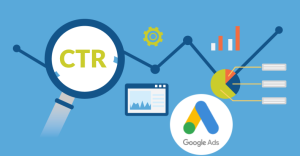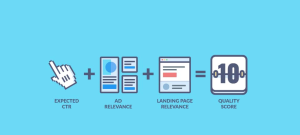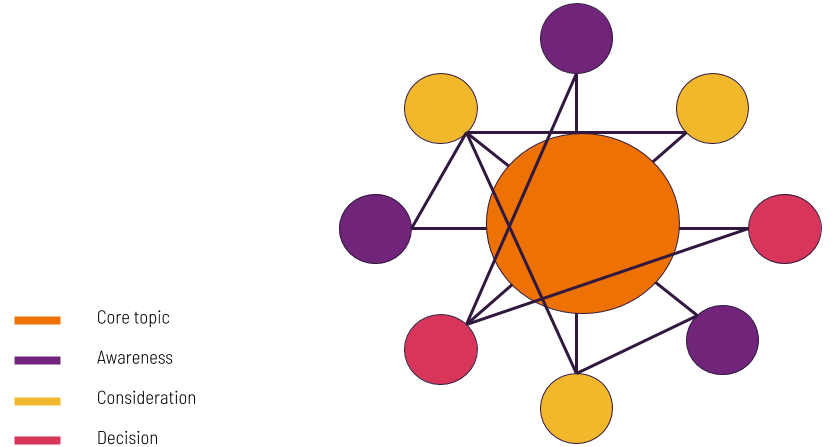Successful marketing is all about finding a way to understand the needs of your customers and the solutions that you offer. Google Ads is one of the best platforms at your disposal when it comes to engagement, plus Google Ads offers you a huge amount of data to optimize your pay-per-click (PPC) marketing campaigns.
As a digital marketer, you know PPC campaigns need to be adjusted based on historical data and market trends. It can be overwhelming if you try to understand what all the metrics in your Google Ads account means, so it’s important to focus on the some key data points first.
Google provides you with hundreds of PPC metrics to help you get the most out of your ad spend. With so many metrics to consider, how do you know which ones are most important?
Let’s look at six Google Ads metrics to help inform your Google Ad optimization choices.
Table of Contents
Toggle1. Impressions

An impression in Google Ads is counted every time your ad shows up on a search results page or anywhere in the Google network. One impression equals one appearance, and you can use this metric to determine if your campaign is too narrow or broad when reaching your target audience.
An impression is one of the fundamental Google Ads metrics, and it shows up at the front of your Google Ads metrics dashboard. You can go one step further to check out Impression Share to understand how your reach compares to your competitors.
Understanding the number of impressions that your campaign is generating can be helpful, the true worth is analyzing your Impressions to determine how your performance matches up to the number of people you are engaging with.
You can improve your campaign impressions by adjusting geo-targeting settings and adjusting the various display information. If you restrict or decrease your location setting, you may see a sudden increase in impressions.
The best way to improve impressions is to improve the quality of your ads. This has a significant impact on impressions, so reverse engineer your ads to see why they aren’t gaining impressions.
2. Clicks

When people click on your ad, Google AdWords tallies a click. Ad clicks, or clicks, count the number of times users click on your digital advertising to reach your website. Similar to impressions, the number of clicks your campaign generates is a basic view of your PPC marketing success.
While impressions tell you how many people see your ads, the number of clicks your ads generate tells you how relevant your ad copy is to your audience.
Traditionally, more is better when it comes to clicks. However, since you pay Google each time someone clicks on an ad, you need to make sure you only drive qualified leads to your site if you want to avoid wasted ad spend.
3. Clickthrough rate (CTR)

Your clickthrough rate (CTR) is the sum of how many people saw your ads (impressions) to how many people clicked on your ads (clicks). While this seems like a no-brainer, in reality CTR is an essential metric because it tells you how relevant your ads are to the people who see the ads.
If you have a low CTR then you need to improve your ad copy, geo-targeting, and even target keywords.
CTR can be used to determine the quality of your positioning, imagery, and chosen keywords. It also helps to evaluate if you are communicating well enough with searchers and identifies your campaign’s effectiveness.
A high ratio of clicks to impressions indicates you have reached your target audience. You’ve got the right keywords and ad copy that are generating click responses.
Compelling copy and engaging images will help your ads stand out from your competitors. Highlight your unique selling points (USPs). What do you have to offer that they don’t? If you keep these USPs in mind, your adverts will attract those clickthroughs.
4. Impression share

This metric compares the number of ad impressions your ads are currently receiving to the total available ad impressions for your chosen keywords. For example, if there are 100 searches for one of your keywords and your ads are displayed for 95 of those searches, your impression share is 95%.
You can check out this metric by enabling the ‘Impression Share’ column on the Ad Groups and Keywords page – it’s the same place you look for impressions.
You should consider improving your ad copy and targeting if your impression share is below 80% when compared to your competitors. It can be difficult to improve your impression share in a competitive market, but in most cases the only way to improve your impression share is to increase your budget or bid strategy.
You also will want to focus on local SEO to see an increase in impression shares. When you adjust your account’s geo-targeting settings, you will see an increase in impressions, which will cause your impression shares to rise.
5. Cost per click (CPC)

Cost per click (CPC) seems like a no-brainer: it’s the amount you pay per click. But this vital Google Ads metric can tell you a lot about your bidding strategy, how competitive your market is for specific keywords, and it can even give you a sneak peek into the PPC strategy of your competitors.
Each industry has its own benchmark of CPC and other metrics, and your CPC will vary based on location, industry, and the keywords that you are using.
You can improve your CPC by using ad scheduling to ensure your ads show up at the correct times of the day. For example, ads targeting teens shouldn’t run during school hours.
6. Quality score (QS)

Google wants to show relevant ads to people using the platform, and you can use the quality score of each ad to determine if Google thinks your ads are relevant to your customers.
Quality score is measured on a scale of 1-10, and a lower quality score means that you will pay more each time your ad is shown, and your ad will be shown less compared to an ad with a higher quality score.
When working on improving your quality score, you will want to take a look at three factors and ask yourself some questions:
- CTR: Is it likely that someone will click your ad when Google presents it about their search terms?
- Ad Relevance: Does the ad fit with the keywords?
- Landing Page Experience: Do the ad and the landing page speak the same language?
Since Google uses a unique algorithm to identify your keywords’ quality score, you may have to make adjustments to your ads, keywords, or landing page.
Use Google Ads metrics to optimize your advertising

By keeping a close watch on these metrics, you will better understand your keywords, ads, and target audience. There are always anomalies and outliers that may throw you off as you use these metrics for your search ads.
The most important thing is that these Google Ads metrics help you identify the cause of your ad’s success, which will help you move closer to your business goals.
Take advantage of any leads these metrics to give, and your ads will be the star of your audience’s Google search.









